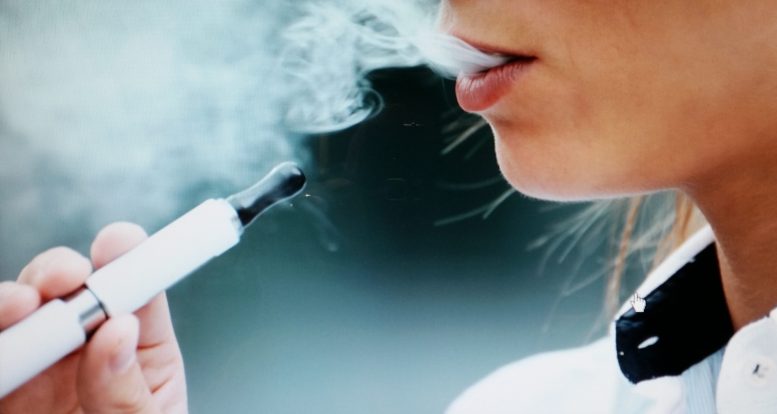By JAN LARSON McLAUGHLIN
BG Independent News
Local teens are downing more caffeinated energy drinks and inhaling more vapors. But fewer are using alcohol, painkillers, cigarettes, cocaine, meth and steroids.
More than 10,000 students, in all of county’s public schools’ grades 5 to 12, responded to the biennial Wood County Youth Survey coordinated by Dr. Bill Ivoska.
For those who question the wisdom of trusting kids to tell the truth on the surveys, Ivoska wholeheartedly agrees.
“Kids lie. We know kids lie,” Ivoska said Friday morning as presented the findings of the survey to its sponsors, the Wood County Alcohol, Drug Abuse and Mental Health Services Board, the Wood County Educational Service Center, and the Wood County Prevention Coalition.
The anonymous surveys are designed to catch kids who were fibbing. For example, students who reported using drugs with made-up names were booted from the results. Kids who reported to using all drugs, all the time, had their surveys tossed out.
What was left were survey results that local experts feel accurately reflect drug, alcohol, and mental health issues faced by Wood County students.
In some ways, the surveys reveal a “whack-a-mole” problem. When local services focus on one issue, that problem decreases. Meanwhile, another problem arises. For example, local teens have faced heavy-duty warnings about smoking for years. The survey shows the results of that, with cigarette use down 84 percent in teens from 2004 to the present.
“Think of the long-term health benefits for those kids,” Ivoska said.
Local efforts have been so successful, that the results stand out as better than national trends. “Rates of decline in Wood County are sharper and faster,” Ivoska said. “We’re closing that gateway.”
But when one gate closes, another one opens. Vaping has seen a 17 percent increase in use among seniors in the last two year.
“Vaping is in a honeymoon period right now,” he said.
Many teens consider vaping as a healthy alternative to cigarettes, especially with harmless sounding flavors like “bubblegum.”
Vaping is also more difficult for people to identify among users. “You can sneak a vape in your locker” and no one would know, Ivoska said.
The trends showed that alcohol use among Wood County students is down 46 percent, and binge drinking is down 63 percent since 2004.
“Another great accomplishment,” Ivoska said.
In the last two years, marijuana use went up with some older kids, while cough medicine use went up with some of the younger ones. Use of LSD ticked up a bit for all ages.
The use of painkillers dropped – possibly due to local efforts to limit access and encourage older family members to discard old medications.
“Grandma’s closet is getting cleaned out,” Ivoska said.
The decline in heroin use may be attributed to kids seeing the effects of the drug on their older family members.
Local law enforcement members told Ivoska that they aren’t busting up a lot of parties with heroin lately. “Kids today are scared to death of it,” he said.
Another gateway closing, Ivoska said.
“The lack of heroin is evidence of the good work we’ve done,” he said.
But there is always more work left to be done.
Of the seniors surveyed, 56.4 percent said they text when driving. A total of 229 admitted to drinking and texting while driving.
After years of declining, bullying is also seeing an increase.
“That’s a concern,” Ivoska said, noting that suicide ideation is higher among those students who are bullied.
Nearly 300 students said they have “severe” mental health problems, and another 167 said they have “intense” mental health issues.
While suicide ideation is up according to the surveys, the actual attempts are down, he said. No youth suicides have been reported in Wood County since 2015 – again progress credited to a focus on prevention, Ivoska said.
For the first time, the surveys also asked students questions about “adverse childhood experiences.” The questions asked students about abuse and neglect at home, and to identify household dysfunctions such as parent separation or divorce, mental illness or incarceration. Nearly 35 percent said their parents are divorced, and nearly 20 percent said they live with someone with mental illness.
Following are some highlights from the youth survey.
Nicotine: Kids continued to show decreases in 30-day cigarette use, with 4.4 percent of seniors reporting use – down from 6.1 percent of seniors in 2016. The use of smokeless tobacco dropped to 2.3 percent among seniors. Vaping use is up to 17.2 percent for seniors, compared to 14 percent in 2016. It appears use of electronic cigarettes may be replacing cigarette use.
Alcohol: Annual and monthly alcohol use has declined dramatically since 2008 – faster than the national rate of decline. Annual use among seniors dropped from 46 percent to 38 percent. Binge drinking dropped from 17.2 percent to 14.1 percent.
Marijuana: Rates held steady, with some grades reporting minor increases and some minor decreases. About 21 percent of seniors reported annual use, compared to 22.4 percent in 2016. Fear of harm from marijuana is decreasing, and use of the drug in e-cigarettes, in edibles and in wax or dabs, is increasing.
Inhalants: Rates remain very low, with eighth graders reporting the highest rate of all grades at 2.9 percent.
MDMA/Ecstasy: Rates are at all-time lows, with only 2.3 percent of seniors reporting use.
Stimulants: Misuse of Ritalin, Concerta and amphetamine preparations like Adderall dropped in all grades to the lowest levels ever reported in Wood County.
LSD: Use increased slightly among all grades.
Narcotic painkillers: Use dropped in all grades, reaching historic lows.
Cocaine: Lowest levels seen in Wood County, with 2.4 percent of seniors reporting use.
Cough medicine: Rates were down overall, but saw slight increases in grades 10 and 11.
Caffeinated energy drinks: Increased use in all grades, with 38 percent of seniors using.
Heroin: Rates were less than 1 percent for all grades. A total of 16 school aged youth in Wood County reported having tried heroin at least once.
Sleep and anxiety medications: Use of barbiturates and benzodiazepine decreased in grades 10 to 12, but increased in grades 7 to 9.
Mental health: The more teens indicate that they experience distress, the more likely they are to use alcohol, tobacco and other drugs. A total of 7.8 percent of Wood County youth reported significant mental health problems.
Bullying: Increased for the first time since 2012, when declines began. Verbal and cyber bullying increased in almost all grades, while indirect bullying increase in most grades, and physical bullying was mixed. Victims of bullying are more likely to abuse substances and have mental health problems.
Adverse childhood experiences: Students were asked about household dysfunction, abuse and neglect – which are connected to risky behaviors. Wood County youth reported 34.6 percent live in households with separation or divorce, and 19.6 percent have a family member with mental illness.
Gambling: Overall rate remained at 3 percent, but varied with 12.8 percent betting on sports teams, and 4.5 percent betting on fantasy sports games.





